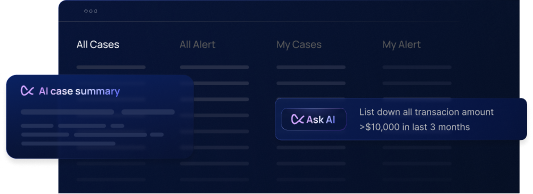The GENIUS Act (short for Generating Enhanced National Interest in Unifying Standards) is a new U.S. legislative proposal aimed at establishing a uniform federal framework for stablecoin regulation. Introduced in 2025, the Act specifically targets “payment stablecoins”, digital tokens pegged 1:1 to a national currency like the U.S. dollar, which have so far operated without dedicated federal oversight. GENIUS seeks to close that gap by creating the first national regulatory regime for stablecoins, prioritizing consumer protection and financial stability. Key goals include enforcing strict transparency and reserve requirements (e.g. 100% reserve backing in cash or Treasuries with monthly public disclosures of reserves), and aligning state and federal licensing standards so that issuers no longer face a patchwork of inconsistent state-by-state rules. In short, GENIUS would replace today’s fragmented approach with a unified rulebook for stablecoins, ensuring they are fully backed, well-regulated, and trustworthy as a medium of exchange.
Why It Matters for Infrastructure Providers
This legislation doesn’t just affect stablecoin issuers, it will reverberate across the entire stablecoin infrastructure ecosystem. Providers such as stablecoin issuers, wallet and custody services, fiat on/off-ramps, merchant payment platforms, and treasury management firms will all face stricter standards under the GENIUS Act. For one, the Act introduces a federal licensing pathway: only “permitted” stablecoin issuers (approved by the OCC or equivalent state regulators) can issue or redeem stablecoins. This means companies that deal in stablecoins may need to obtain a new federal charter or a harmonized state license to operate, replacing the old model of obtaining dozens of separate state money transmitter licenses. Even non-issuers like exchanges, payment processors, or wallet apps will be constrained, after a 3-year transition, they cannot offer or facilitate any stablecoin that isn’t issued by a GENIUS-compliant entity.
In practice, stablecoin infrastructure providers should prepare for bank-level compliance obligations akin to traditional financial institutions. GENIUS explicitly brings stablecoin issuers under the Bank Secrecy Act (BSA) umbrella, meaning they must implement full anti-money laundering (AML) and sanctions compliance programs, conduct customer due diligence (KYC/KYB), monitor transactions, and report suspicious activity. These obligations will likely extend to custodians and intermediaries handling stablecoin transactions as well. Providers may be required to perform regular reserve attestations and audits, for example, stablecoin issuers must publish monthly reserve reports vetted by an accounting firm and certified by the CEO/CFO. They’ll also need robust transaction-level controls, such as the technical ability to freeze or block illicit transactions on-chain when ordered by regulators. Finally, new reporting duties are on the horizon: expect more frequent filing of compliance reports and Suspicious Activity Reports (SARs) to regulators, plus scrutiny of any consumer disclosures or marketing claims (the Act even bans misleading claims about stablecoins being “insured” or “government-backed”). In sum, GENIUS raises the bar for anyone involved in stablecoin operations, demanding stronger licensing credentials, tighter oversight of funds, and end-to-end compliance vigilance.
What the Act Could Require
If enacted, the GENIUS Act will impose several critical compliance mandates across the stablecoin industry. Stablecoin issuers and related service providers should anticipate at least the following requirements:
- Robust AML Programs: All participants will need to maintain effective AML and sanctions compliance programs, as now explicitly required under U.S. law. Stablecoin businesses will be treated as regulated financial institutions and must implement comprehensive KYC processes, risk-based transaction monitoring, and sanctions screening to meet Bank Secrecy Act standards. No entity in the stablecoin payment chain gets a free pass – regulators expect the same level of diligence here as in traditional banking.
- Transaction Traceability Across Fiat and Crypto Rails: The Act pushes for full transparency of stablecoin flows. Firms must ensure that stablecoin transactions are traceable and attributable, just like wire transfers. That means collecting and transmitting required sender and receiver information for stablecoin transfers (per the FATF “Travel Rule”) to prevent anonymous transfers. Providers will need to link on-chain wallet addresses to verified customer identities and maintain records of token movements. The ability to track funds as they move between fiat bank accounts and blockchain addresses will be crucial for investigations and regulatory audits.
- Real-Time Monitoring of Red Flags: Compliance can’t be a once-a-month spreadsheet exercise; real-time surveillance is the new norm. Under GENIUS, firms are expected to actively detect and respond to suspicious behavior across their platforms. For example, rapid layering of funds between a bank account and a crypto wallet should immediately trigger an alert and appropriate action (e.g. flagging or freezing funds). In practice, this means deploying automated transaction monitoring systems that scan stablecoin transactions as they occur for red flags like structuring, unusual velocity, or interactions with high-risk addresses. Regulators have signaled that they want continuous, 24/7 AML monitoring on crypto just as on electronic fiat payments – so stablecoin providers will need to upgrade from batch checks to real-time risk detection.
- Clear Audit Trails & Regular Reporting: To facilitate oversight, GENIUS will demand granular record-keeping and reporting from stablecoin enterprises. Every transaction and compliance decision should be logged in an audit trail that regulators can review on demand. Expect requirements for periodic reports: for issuers, monthly public reserve reports and annual financial audits will be mandatory, while all providers will likely need to file SARs and other regulatory reports for any suspected illicit activity. In essence, firms must be “exam-ready” at all times – with a documented history of customer due diligence, transaction monitoring alerts, and case resolutions to demonstrate their compliance. This level of transparency not only aids regulators, but also protects providers by showing they took proper steps if something goes wrong.
How Flagright Supports GENIUS Act Readiness
Adapting to these new compliance obligations can be daunting, but modern financial compliance software like Flagright is purpose-built to help stablecoin infrastructure providers meet GENIUS Act requirements with agility. Flagright’s platform delivers a strategic, all-in-one compliance infrastructure that aligns seamlessly with the Act’s mandates:
- Real-Time Transaction Monitoring (Fiat & Stablecoins): Flagright enables real-time surveillance across both traditional fiat rails and blockchain networks in a unified system. With a single API integration, providers can monitor bank transfers, card payments, remittances, and on-chain stablecoin transactions side by side in one dashboard. The platform ingests data from all payment rails in real time, automatically flagging any suspicious patterns (e.g. rapid movement between fiat and crypto accounts) and raising instant alerts for the compliance team. This 24/7 multi-rail monitoring ensures you can catch and stop illicit stablecoin activity as it happens, not weeks later.
- Dynamic Risk Scoring: Staying ahead of evolving risks is easier with Flagright’s AI-driven risk scoring engine. The system continuously adjusts customer and transaction risk scores in real time based on behavior and context. For example, if a normally low-risk wallet suddenly starts large cross-border USDC transfers at odd hours, the risk score elevates automatically. This dynamic risk profiling means your controls adapt as customer behavior changes, helping to identify emerging threats (like mule accounts or new fraud patterns) before they escalate. By baking behavioral analytics into monitoring, Flagright lets compliance teams focus on truly high-risk anomalies while minimizing false alarms.
- No-Code Compliance Rule Adjustments: Regulatory standards aren’t static, so your rules shouldn’t be either. Flagright provides a no-code rule builder that empowers compliance officers to create or modify monitoring rules in minutes, no engineering help needed. As GENIUS Act guidelines roll out or new red flag typologies are published, teams can easily update thresholds, add watchlist filters, or tweak scenarios on the fly. This agility ensures your controls remain aligned with the latest regulatory guidance (or your own risk policies) without lengthy development cycles. A built-in library of predefined rules and the ability to test changes safely (via sandbox “shadow rules”) further streamline the process. In short, Flagright’s configurable, no-code rules engine lets you operationalize GENIUS Act requirements quickly and keep pace with any future adjustments.
- Unified Audit Logging & SAR Workflows: Flagright’s platform centralizes all compliance activity, providing the robust audit trail and case management capabilities needed for regulatory scrutiny. Every alert investigation and action is logged for audit in one system, so you can easily demonstrate your compliance steps to examiners. Analysts view a customer’s full fiat and crypto transaction history on one screen and can document their findings in-app, ensuring nothing falls through the cracks. When it’s time to report an incident, Flagright helps generate the required regulatory reports (e.g. drafting SAR narratives) directly from the AML case management module. This end-to-end workflow – from initial alert to SAR filing – is contained in a single platform, dramatically reducing manual effort and error. By unifying case tracking and reporting, Flagright makes it far easier to prove compliance with GENIUS Act obligations and respond swiftly to information requests from regulators.
- Cross-Border Controls & Travel Rule Integration: Stablecoins often facilitate global value transfers, so Flagright is built with cross-border compliance in mind. The platform supports integration of Travel Rule data sharing, meaning you can attach and transmit required originator/beneficiary information alongside crypto transactions in line with FATF standards. This ensures that when your users send or receive stablecoins internationally, you remain compliant with jurisdictions requiring sender/receiver info for virtual asset transfers. Moreover, Flagright’s real-time screening includes international sanctions and high-risk geography filters, helping you block prohibited transactions across borders. As regulators increasingly demand “same rules for crypto as for wires,” Flagright gives you the tools to apply Travel Rule, sanctions, and cross-border AML controls seamlessly to your stablecoin flows and broader crypto and stablecoin activity. The result: your platform can expand globally with stablecoins while meeting the highest standards of global financial integrity.
Conclusion: Stay Ahead of the Regulatory Curve
The GENIUS Act represents a new chapter in how stablecoin businesses are regulated, one that will require proactive adaptation from issuers and infrastructure providers alike. Rather than viewing it as a compliance burden, proactive teams can treat this as an opportunity to get ahead of the curve. Embracing strong compliance now will not only ensure you’re ready when regulators start knocking, but also position your organization as a trustworthy leader in the space. In fact, being “proactively compliant, consistently ahead of the curve” is becoming a competitive differentiator, it builds confidence among regulators, banking partners, and customers. Stablecoin providers who invest early in robust AML controls and transparent operations will find it easier to form partnerships and enter new markets, as they’ve proven they can meet stringent standards.
As the regulatory landscape shifts, don’t wait for enforcement deadlines to overhaul your compliance. Start closing gaps today, update your policies, unify your monitoring tools, and educate your teams on GENIUS Act expectations. By doing so, you turn compliance into an accelerator rather than a roadblock. Flagright’s infrastructure is here to help in that journey. With real-time, AI-enhanced monitoring and an all-in-one compliance platform, you can confidently navigate the upcoming stablecoin rules and even exceed them. The message from lawmakers is clear: the era of unregulated stablecoins is ending, and rigorous compliance will be the ticket to play. By acting now and leveraging solutions like Flagright, stablecoin infrastructure providers, brokerages and trusts can lead the way in this new regulated era – enhancing protection, fostering innovation, and cementing trust in the stablecoin ecosystems of tomorrow.
Ready to future-proof your stablecoin compliance? Explore Flagright’s platform to see how you can achieve GENIUS Act readiness and turn regulatory change into strategic advantage.
About the Author
Joseph Ibitola leads global demand generation at Flagright, an AI-native transaction monitoring and AML compliance platform. He drives marketing strategy, campaigns, and growth initiatives that help financial institutions adopt stronger compliance frameworks and reduce fraud risk. With expertise spanning fraud prevention, AML compliance, and financial risk management, Joseph also develops thought leadership and educational resources that position Flagright as a trusted partner to the finance industry.




.svg)





















